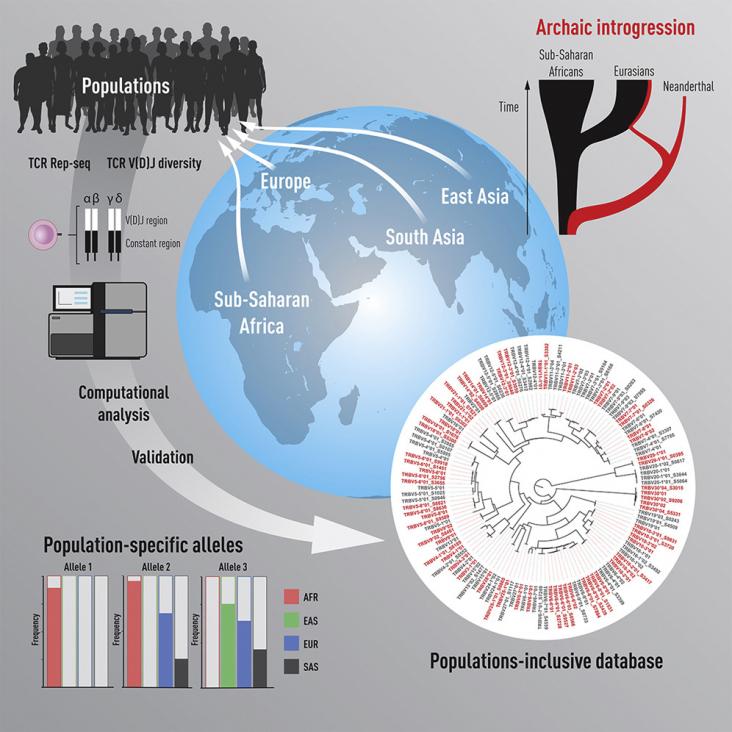Review article that examines 66 studies to understand the state of knowledge on the relationship between urban environment and the travel of people with disabilities. Adapts the classic travel demand model to the mobility characteristics of people with disabilities, interprets the existing literature, points out the missing links, and suggests directions of future research.
This Article supports SDGs 3 and 10 by evaluating whether provision of a cash transfer to children and adolescents would improve their access to health and education resources, by removing financial barriers to these resources. The programme was successful in this regard; eg, beneficiaries were twice as likely as non-beneficiaries to use rehabilitation services and attend school.
Health for All must include representation of people with lived experience in the research underlying health care: this paper describes a first-person experience of this in mental health.

The frequencies of immune receptors on T lymphocytes varies among African, East Asian, South Asian and European populations.
The rich potential of legal rights in advancing planetary health is no longer untapped.1 In July, 2022, the UN General Assembly adopted Resolution A/76/L.75, which recognised “the right to a clean, healthy and sustainable environment as a human right”, by a landslide of 161 votes. This historic resolution stands on the shoulders of a long line of UN initiatives, such as the Human Rights Council's Resolution 48/13, which was enacted in October, 2021, and recognised the right to a healthy environment as “important for the enjoyment of human rights”. This occurred 6 months after UN Environment, WHO, and 13 other UN entities issued a statement that described the failure to recognise the right to a healthy environment as detrimental to the attainment of the UN Sustainable Development Goals. Earlier, the Stockholm Declaration on the Human Environment 1972 affirmed that humans have “the fundamental right to freedom, equality and adequate conditions of life, in an environment of a quality that permits a life of dignity and well-being”. Two decades later, the Rio Declaration on Environment and Development 1992 demanded that states “conserve, protect and restore the health and integrity of the Earth's ecosystem”.
This Article supports SDGs 3 and 10 by assessing the socioeconomic inequalities in cancer across countries and over time in Europe.
This content aligns with Goal 3: Good Health and Wellbeing as well as Goal 10: Reduced Inequalities by recognizing the importance of addressing health needs across various life stages within the family unit, emphasizing the significance of equal rights and access to healthcare for women, children, and men. It underscores the role of family and community support in promoting health through factors such as nutrition, education, and social and mental well-being, contributing to the overall health and well-being of individuals. Additionally, the discussion of the impact of aging on both individuals and families highlights the need for comprehensive health and social support systems to address the challenges associated with aging, thereby promoting good health and well-being for all members of society. Furthermore, acknowledges the influence of social inequities, poverty, and other factors such as displacement and mass trauma on family health. By advocating for the reduction of poverty and the provision of social support systems, the content supports efforts to reduce inequalities in access to healthcare and promote equitable health outcomes for all members of society.
This content aligns with Goal 3: Good Health and Wellbeing as well as Goal 10: Reduced Inequalities by emphasizing the importance of technology assessment capability in shaping health policy and priorities to improve health outcomes and quality of life. By promoting strong professional education and practice standards, accreditation processes, and educational programs for public health, the content supports efforts to enhance the quality of healthcare services and public health interventions. Additionally, it aligns with Goal 10: Reduced Inequalities by recognizing the need to address disparities and ensure equitable access to evidence-based methods of prevention, diagnosis, and therapy. By advocating for continuous revision of legal frameworks and ethical standards in response to societal changes and emerging health challenges, the content underscores the importance of promoting fairness and equity in public health practices and policies. Moreover, it highlights the ethical imperative of public health interventions to protect populations from illness and premature death, thereby contributing to efforts aimed at reducing inequalities in health outcomes and promoting the well-being of all members of society.
For monitoring viral load (VL) or Early Infant Diagnosis (EID) of HIV-1, real-time Polymerase Chain Reaction (qPCR) is used to perform on plasma or Dried Blood Spot (DBS) sample. The qPCR method is expensive and requires sophisticated equipment. Therefore, there is a requirement for newer and cheaper technology for VL measurement or EID.
This falls along the themes of financial burden for cancer patients and discusses innovations and strategies for health care providers.
